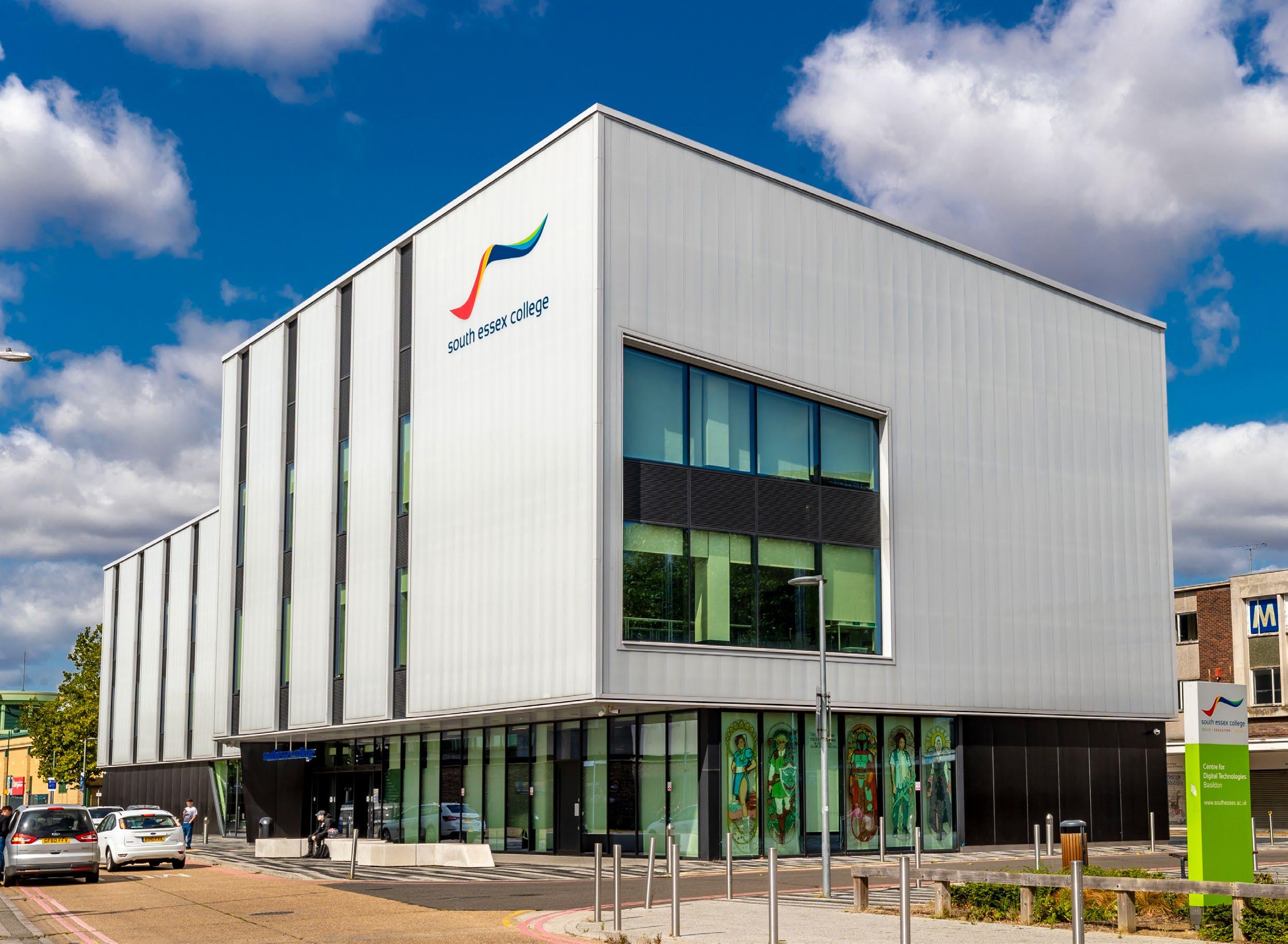

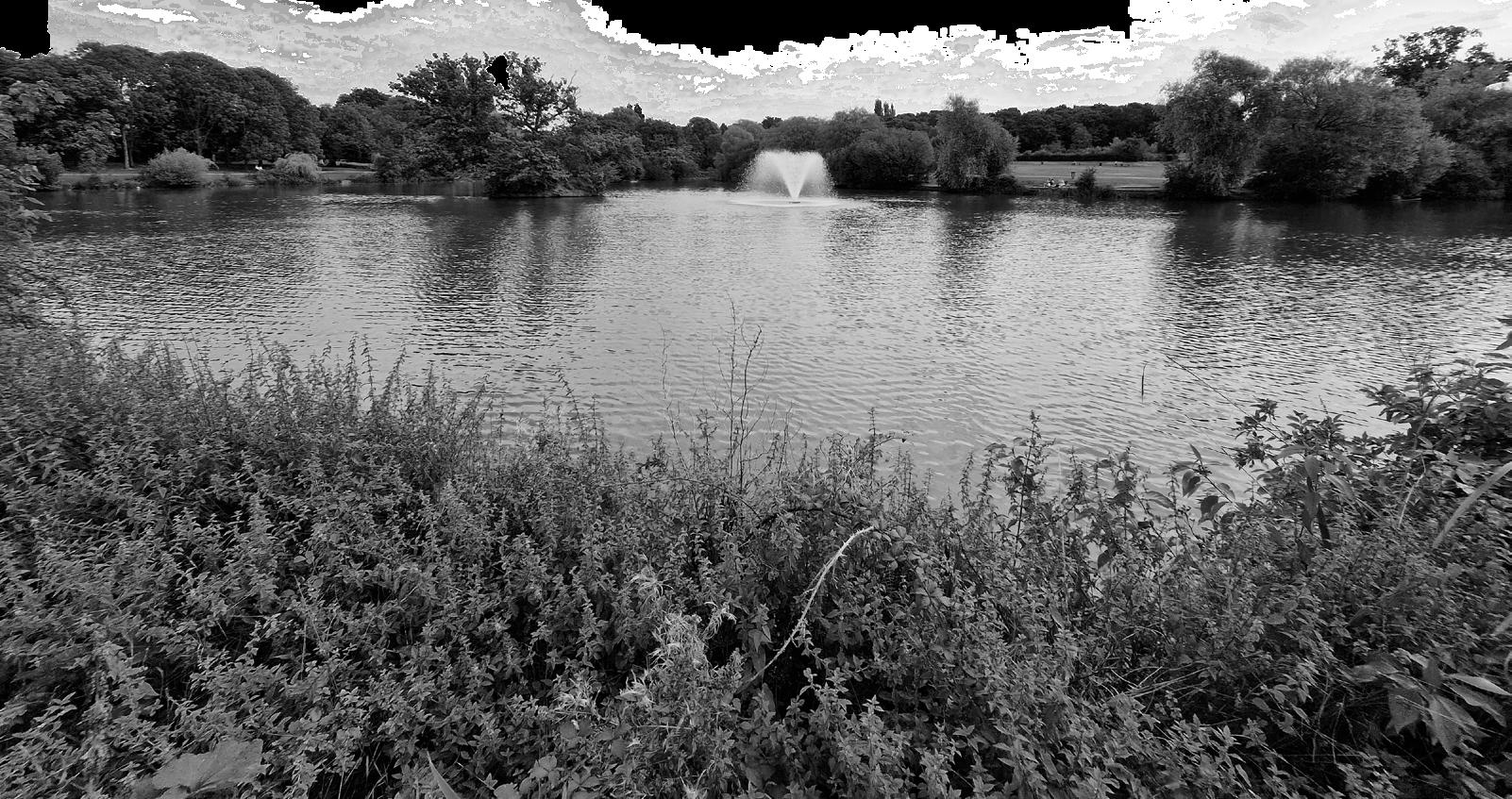


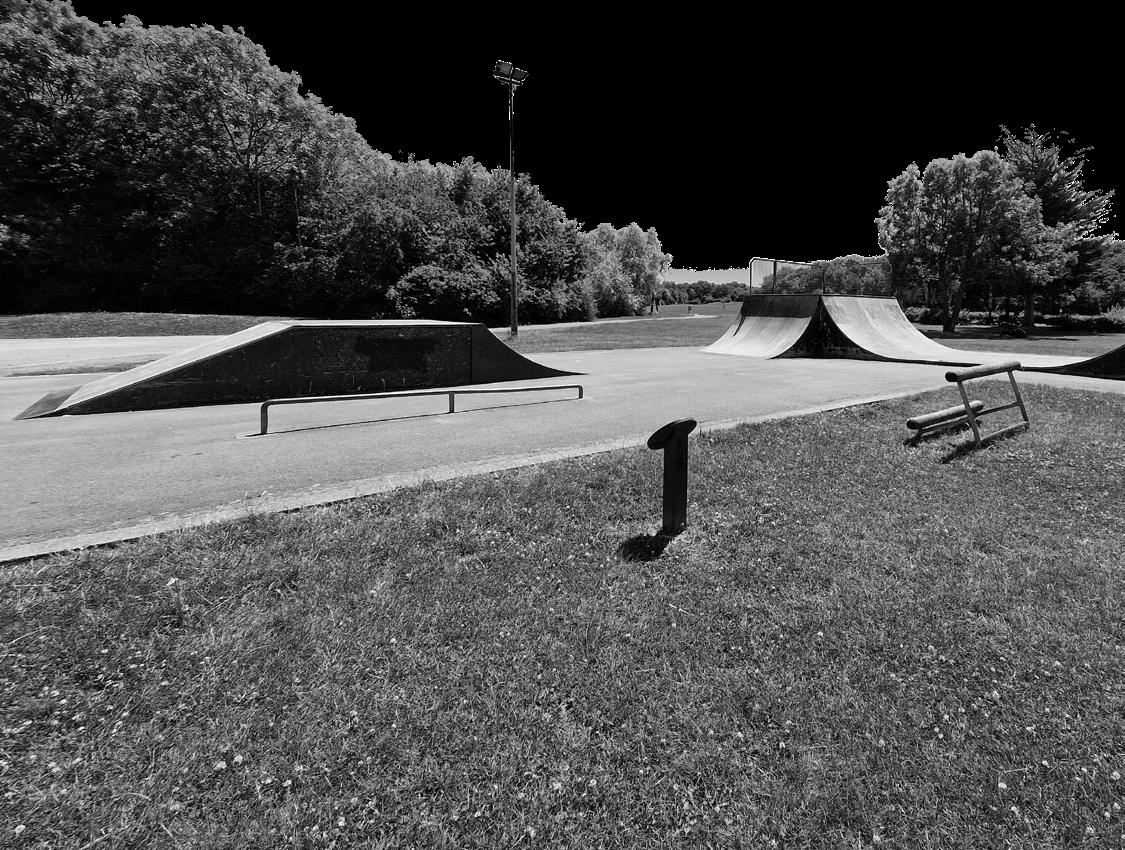











The NPPF requires that planning policies and decisions should aim to achieve healthy, inclusive and safe places facilitating social interaction and creating healthy, inclusive communities. This not only applies to promoting physical and recreational activities but also includes enabling the creation of healthy living environments for people of all ages which supports social interaction and emotional health and well-being, which are equally important to resilient communities.
The NPPF expects local planning authorities to work with public health leads and health organisations to understand and take account of the health status and needs of the local population, including expected future changes, and any information about relevant barriers to improving health and wellbeing.
Local authorities have a crucial role in delivering sport and physical activity opportunities. Sport England, through their ‘Active Design’ policy, promote 10 principles that promote activity, health and stronger communities through the way towns and cities are designed and built. Sport England also have a strategy ‘Towards an Active Nation’ which sets out their vision to encourage everyone to feel able to engage in sport and physical activity, regardless of age, background or level of ability.
The Mid and South Essex Integrated Care Board (ICB) covers Basildon Borough and is responsible for commissioning primary and secondary healthcare services and prepares plans for this purpose. It is responsible for ensuring that its commissioning plans link to the Essex Joint Health and Wellbeing Strategy 2022-2026. As an acute service provider Basildon and Thurrock University Hospital has an important role in delivering services required by the ICB and is therefore essential to the health and well-being of residents in the Borough, and neighbouring areas. There are a range of other providers for GP, community health and mental health services.
The Essex Joint Health and Wellbeing Strategy 2022-2026 shows that access to a good quality environment, with green spaces and places to walk, contributes towards both the physical and mental well-being of people ensuring that they are in the best health to engage in employment, or training which leads to employment. The quality of the physical environment is therefore key to addressing both health outcomes and issues associated with deprivation.
The Basildon Borough Community Strategy 2012-2036 seeks to support local people to improve their health and well-being. Objectives have been set which aim to support local residents to achieve this through a number of priority action areas working with the NHS and facilitating regeneration and changes in the delivery of services which improve health and well-being.
Essex County Council is currently responsible for social care provision across all Essex Districts and Boroughs. Strategies have been produced in order to ensure that social care provision responds to the various needs of different groups within the population including both young people and older people, however increasingly community-based initiatives which reduce the need for costly residential based responses are favoured.
Whilst there are measures that can be taken to ensure that both existing communities and new development create opportunities for people to live well, there will always be a demand for health services, and evidence has indicated that an ageing population will continue to give rise to strains on these services into the future. There is a need for the ICB and health service providers to review how they deliver their services to respond to current and emerging patterns of demand, and also new technologies.
There is a requirement to consider how need arising from growth can be accommodated within the system. In the first instance, developments will be expected to limit need through the application of good quality design and layout which applies active design principles, as advocated in the Essex Design Guide. The Essex Planning Officers Association has prepared Health Impact Assessment (HIA) Guidance, and this will be applied to all appropriate developments to ensure that opportunities to promote good health and reduce impacts on health services have been incorporated into development. A HIA allows for assessment of the development against a number of criteria that are known to influence health and well-being and enable Basildon Council to meet the NPPF objectives of creating healthy communities. The use of a HIA, as a material consideration, also enables Basildon Council to ensure that the positives benefit from the proposed development can be maximised whilst any identified negatives are either removed or mitigated against. In addition, a HIA may be required when it is identified through an Environmental Impact Assessment. In this instance, a HIA may be part of an expanded element to human health, as an integrated assessment or be required as a full HIA. The approach should be agreed by the Council early in the preparation of a planning application.
Whilst the Council expects development to minimise health impacts, there will remain a need for additional healthcare provision, and developments will be expected to contribute towards the expansion of services necessary to support growth. This may take the form of new GP hubs, the expansion of existing facilities, or the provision of infrastructure which enables existing facilities to be used more effectively, or for longer. It will be for NHS England and the ICB, in consultation with the service providers, to determine the types of interventions needed in each area to support growth as early as possible and incorporate these into the Borough’s Infrastructure Delivery Plan.
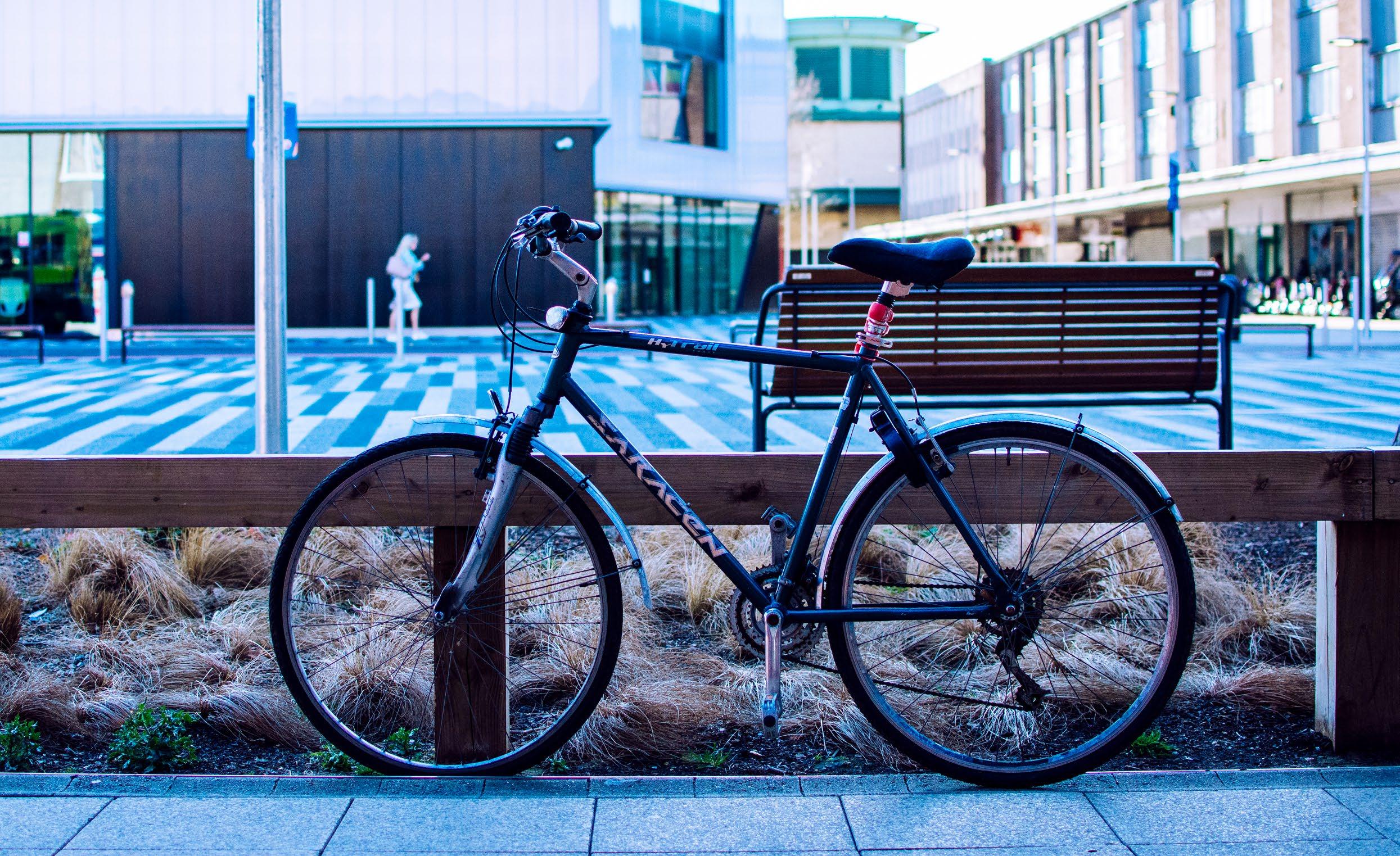
The Council will improve and promote strong, vibrant and healthy communities through ensuring a high quality environment with local services to support health, social and cultural wellbeing and reduce inequalities. Measures that will help contribute to healthier communities and reduce health inequalities must be incorporated in a development where appropriate.
The Council will require:
a. development to positively contribute to creating high quality, active, safe and accessible places; and
b. a Health Impact Assessment (HIA) for proposals of:
i. 50 or more dwellings;
ii. all development in Use Class C2 (Residential Institutions);
iii. all non-residential developments delivering 1,000 square metres or more gross internal floor space; and.
iv. ‘sui generis’ hot food takeaways.
Schemes will:
c. contribute towards the health priorities of the Health and Wellbeing Board and partners to help reduce health inequalities across the borough;
d. support the provision of new or improved health facilities, in line with ICB and NHS England requirements; and
e. protect existing health and well-being facilities in line with Basildon Borough Community Strategy 2012-2036.
f. seek mitigation, provided and/or secured by planning obligations towards new or enhanced health facilities from developers where new housing development would result in a shortfall or worsening of health provision; and
g. ensure increased contact with nature and access to open spaces and of fering opportunities for physical activities through green infrastructure and open space strategies.
Spatial planning and health and wellbeing are intrinsically linked. The health and wellbeing of individuals and communities is affected by a wide range of factors. Health and wellbeing can be encouraged and improved through high quality planning, design and management of the environment providing convenient local healthcare services; public and open spaces and natural environments to encourage people to be physically active encouraging community participation; ensuring developments embody the principles of lifetime neighbourhoods and promote independent living; promoting access to healthy and locally sourced food; and encouraging active travel, most particularly cycling and walking for healthy lifestyles.
The Council will work to improve the health and wellbeing of residents and communities by working in partnership with the NHS and Public Health to ensure residents and communities can access high quality primary and secondary health care services and that new and improved services are put in place, where appropriate, to serve the growing population; particularly for vulnerable groups and communities.
The NPPF recommends that local authorities should consider opportunities to support people to live healthy lifestyles including planning for an environment that helps promote active travel and physical activity. Good quality infrastructure encourages active travel and the use of public transport. Improved active travel corridors and access to public transport makes it easier for our residents and communities to use healthier travel choices which help prevent excess weight and obesity. All new and improved walking and cycling routes should be designed to ensure they are coherent, direct, safe, comfortable and attractive.
Most development has a potential impact upon the health services and facilities that are provided in the Council’s administrative area. Likewise, through the design of new development, healthy living can be promoted. The extent of these impacts needs to be assessed to ensure that adequate health services continue to be provided for the community as a whole. For developments which have relatively little impact upon health services, an initial assessment may be sufficient to satisfy the requirements of this policy. For developments where an initial assessment indicates more significant health impacts, a comprehensive Health Impact Assessment (HIA) will be required. A full HIA can include matters such as housing quality and design, access to healthcare services and other social infrastructure, access to open spaces and the natural environment, air quality and noise impact, accessibility and travel options, crime reduction and community safety, access to healthy food, social cohesion and, minimising the use of resources. The Council will liaise with the Mid and South Essex Integrated Care System and Essex County Council Health and Wellbeing Services when assessing the scope and scale of likely impacts. A HIA should be prepared following the current best practice advice and reflect the most up to date evidence. Further details on preparing HIAs can be found in the Health Impact Assessment section of the Essex Design Guide.
Alternatives considered
No Policy - The NPPF requires planning policies to aim to achieve healthy spaces. Therefore, this is not a reasonable alternative.
The NPPF is clear that access to high quality open spaces and opportunities for sport and recreation can make an important contribution to the health and well-being of communities. There is an expectancy that once identified, open spaces, allotments, playing fields and other recreational land will be preserved from development.
The NPPF guards against the unnecessary loss of existing open space, sports and recreational buildings and land, including playing fields. This is to ensure that sports and recreational provision are able to meet the changing needs of the community and are well integrated with the community in which they are located.
Open space in the Borough can be defined as publicly accessible land consisting of Urban Parks and Gardens; Natural and Semi-Natural Green Space; Outdoor Sports Facilities; Amenity Green Space; Provision of Places for Children and Young People; Education Fields; Allotments, Community Gardens and City Farms; Churchyards and Cemeteries; and Urban Civic Spaces. Public open space does not include private open space and land which has no public right of access such as domestic gardens, grounds around buildings, car parks, agricultural land and forestry plantations.
Local open spaces provide most of the Borough’s 1,300ha of green spaces. They therefore offer great value as places for people to participate in organised sport, play, informal recreational activity and appreciation of the natural environment, and the need to retain open space for these uses will continue to be important as the Borough’s population grows.
In addition to formally identified open spaces, the wider network of Green Infrastructure in the Borough and beyond provides the opportunity for outdoor recreation such as walking and cycling. Public rights of way (PRoW) have an important role to play in ensuring the health and well-being of Borough residents. Furthermore, the provision of high-quality local opportunities to walk and cycle will help to stop local residents from travelling for such activity. In order to provide high quality walking and cycling networks across the Borough, the Council has prepared the Local Cycling and Walking Infrastructure Plan Plus (LCWIP+) Update. This plan explores opportunities to improve each network and their connectivity across and between towns as well as to better integrate cycling, walking and public transport networks in order to encourage multi-modal travel by identifying infrastructure improvements and future investments in these networks.
The NPPF introduces the ability for local communities to protect green spaces of local significance by designating them Local Green Spaces in Local Plans and Neighbourhood Plans. This designation would prevent new development being permitted on these spaces unless very special circumstances exist.
Criteria on what areas should be considered suitable for the Local Green Space designation are set out within the NPPF and relate to the proximity of the green space to the community it serves, its particular local significance and whether it is local in character.
The NPPF states that local policy managing development within Local Green Spaces should be consistent with policy for Green Belts. The local policies in this plan place strict controls over development within the Green Belt and only allow inappropriate development where very special circumstances can be demonstrated.
Local people and some Local Councils expressed, during public consultations, the desire to have some of the Borough’s green spaces designated as Local Green Spaces in accordance with the NPPF. The Council subsequently received and assessed the nominations for possible Local Green Space designation. All the sites put forward were tested against the NPPF criteria, having regard to the advice in the PPG. The sites that are considered to meet the criteria for Local Green Space designation are listed as Local Green Spaces in Appendix 2 of this plan.
It should be noted that green spaces protected by law, including areas of Common Land, Village Greens, Town Greens, allotment gardens, Sites of Special Scientific Interest, and Local Nature Reserves were excluded from inclusion on the list of Local Green Spaces due to the level of protection already afforded to them.
Sport England is the organisation which provides the strategic lead for sport in the country. The organisation fulfils the function as a statutory consultee for all relevant planning applications affecting playing fields land and provides design guidance for the development of sports facilities. Working within the provisions of the NPPF, Sport England encourages local planning policy to protect, enhance and provide for sports facilities based on robust and up-to-date assessments of need, as well as helping to realise the wider benefits that participation in sport can bring.
The Council has regularly updated its evidence base with regard to open space provision, playing pitch provision and indoor sports facilities. Previous updates took place in 2018, and have enabled the Council, alone and in conjunction with partners, to plan for and deliver a number of improvements to open spaces, playing pitch provision and sports facilities in the Borough. The Council have also updated this evidence base and have published a Built Facilities Needs Assessment and Strategy, and a Playing Pitch Assessment and Strategy (2025). The approach to this work has been endorsed by Sport England. The overall study has assessed the availability, quality, quantity, and accessibility of existing provision for identified sports facilities in the context of existing and future needs. The outcomes of the study have enabled the Council to adopt a strategic approach to the future provision, maintenance, and enhancement of sports facilities.
The Council’s most recent Basildon Playing Pitch Strategy and Action Plan (2025), the Basildon Playing Pitch Strategy Assessment Report (2025), Basildon Indoor Sports Strategy and Action Plan (2025) and Basildon Indoor Built and Sport Assessment Needs (2025) considered the quantity, quality and accessibility of open spaces, and playing pitches, in the Borough and advised on the approach that should be taken to each site. In particular it highlighted where open spaces should be retained for leisure and recreation purposes. They also set standards for the quantity, quality and accessibility of open space and identify the approach that should be taken to secure new playing pitch provision.
Whilst the Playing Pitch Strategy (2025) reflects the proposed level of growth set out in this plan, the Open Space Assessment (2010) did not assess the level of growth now planned for. However, it is clear that the projected growth in population is such that open spaces will become more important resources for the future rather than less, and therefore the ongoing protection of those open spaces identified in 2010 remains justified. It will however be necessary to consider the most up to date local Open Space Strategy/Playing Pitch Strategy when considering the appropriateness of proposals for the redevelopment of public open spaces, as these will contain the most up to date evidence standards. Public Open Spaces are listed in Appendix 1 of this plan.
Allotments
The Government recognises that allotments are valuable green spaces and community assets providing people with the opportunity to grow their own produce as part of the long-term promotion of environmental sustainability, health and well-being, community cohesion and social inclusion. According to Section 23 of the Small Holdings and Allotments Act 1908, local planning authorities including parish and town councils, have a duty to provide allotments where they perceive a demand for them in their area.
There are seven allotment sites across the Borough with over 500 plots. The Council manages three of these sites and the other four are run by allotment associations under a devolved management arrangement. Spatially, they are concentrated to the south and north-east of the Borough, with no provision in Billericay despite there being indicators of need. The Council will continue to lend its expertise to town and parish councils to assist in their efforts to secure allotment provision for their residents, as well as using the strategic housing allocations to secure additional provision for the growing population.
Playing Fields Associated with Education Facilities
The policy framework generally protects and seeks to enhance educational playing fields. The Government has also introduced programmes aimed at renewing school sites, upgrading facilities and encouraging schools to branch out their role to the community. The dual use of facilities outside of school hours is encouraged, including schools’ sports facilities with support from Sport England.
The Advice on Standards for School Premises (2015) confirms that all maintained schools and academies must provide suitable outdoor space to enable physical education in accordance with the school curriculum and to enable pupils to play outside. Whilst this is a separate consent framework to requirements under the planning system, there is a very strong policy presumption against the disposal of school playing field land whilst the educational primary use remains.
Any proposal which involves the loss of school playing field land must take account of the provisions of Section 77 of the School Standards and Framework Act 1998 which requires the agreement of the Secretary of State before planning permission is sought for development or change of use. It is a requirement that any proceeds from the disposal of the school playing field must be used towards specific projects to improve or enhance sports or educational facilities in the area.
School based playing field provision exists primarily to meet educational needs; however, it also has the potential to be used by the wider community where there is a policy or practice promoting such dual use, outside educational hours. The re-use of educational premises can help to meet modern expectations of the quality of provision and residents’ needs for such facilities, particularly in areas where access is otherwise limited. The Basildon Playing Pitch Strategy and Action Plan identifies existing provision of playing pitches on schools within Basildon Borough and recommends that these should be open for community use where practical. Community use already occurs at some of these sites and is particularly recommended on secondary school sites where it is not already occurring.
There are a range of private and voluntary club facilities within the Borough which offer a greater or lesser degree of community use for their activities. Sports clubs and other private facilities make an important contribution to open space provision in the Borough. The venues, activities, opportunities, and sports development work offered by various sports clubs are identified within the Playing Pitch Strategy (2025). Private sports clubs are extremely important in the provision of playing pitches for football, rugby, cricket and bowls greens offering opportunities for community sport and recreation.
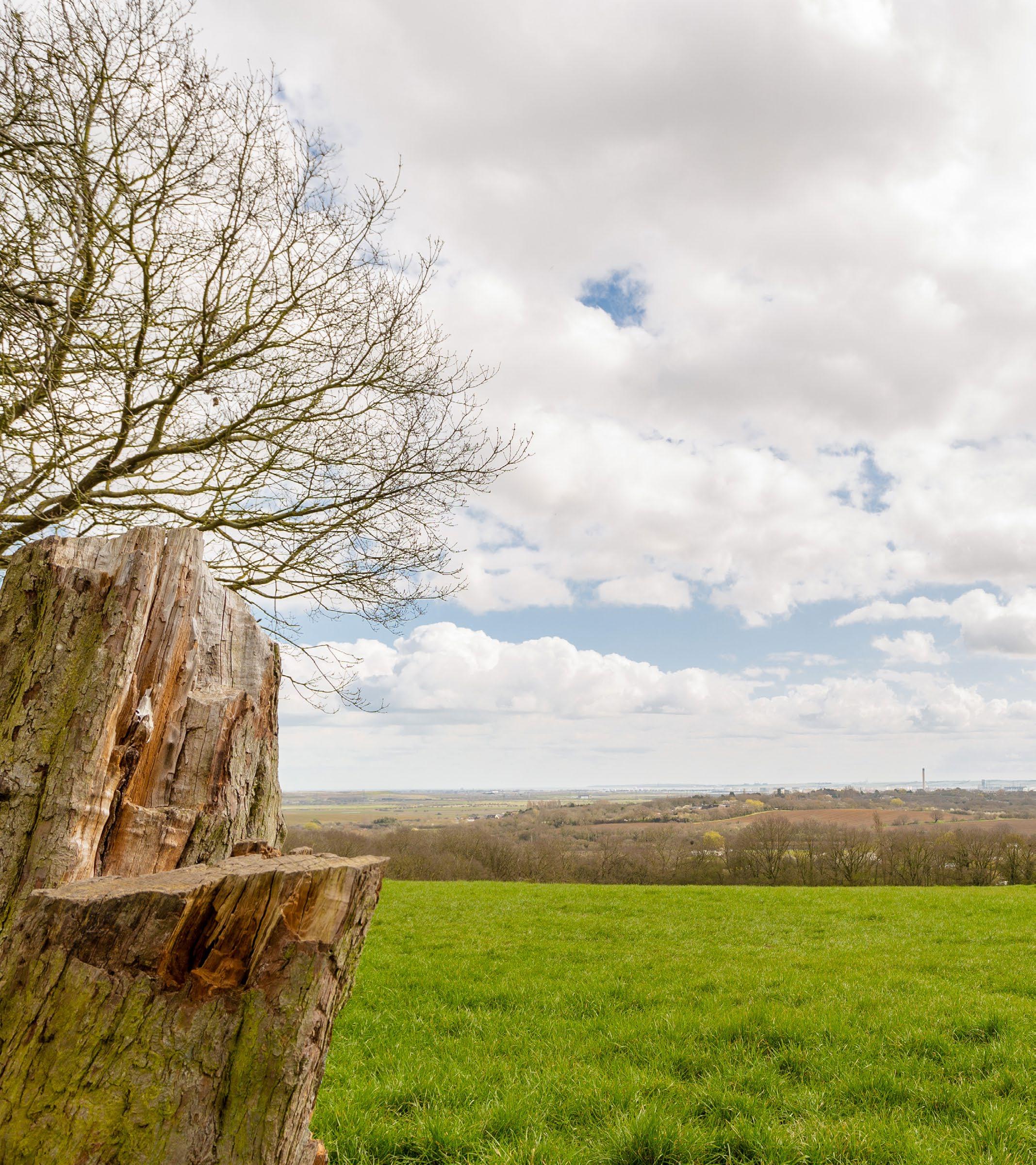
1. The Council will protect and enhance the borough’s parks, public open spaces and playing fields (including Associated with Education Facilities), working closely with a range of stakeholders to address deficiencies in quantity, quality, and access.
2. Public open spaces should be safe and easily accessible through walking, cycling, and public transport for all users, and supportive infrastructure such as crossings, cycle parking, bus stops, and clear signage should be provided appropriately near the entrance of open spaces. To reduce car dominance, these should be provided in proximity to residential, commercial and social infrastructure.
3. Existing open space local green spaces, allotments, spor ts and recreational buildings and land, including playing fields, should not be built on unless the requirements outlined in national policy are met.
4. Development on open space not shown on the Policies Map, including amenity greens and amenity spaces with limited public access, will generally not be suppor ted, except where proposals accord with an agreed Council regeneration strategy, or include replacement space of higher quality to the open space that would be lost.
5. Development should not rely upon existing publicly accessible open space to contribute towards on-site communal amenity space and child play space. All major and strategic development should contribute to the delivery of sufficient new publicly accessible open space on-site which should:
a. meet the needs of current and any future residents
b. be of a high-quality that is accessible to all
c. provide multiple benefits, including recreation, food growing, SuDS, improvements to biodiversity and links to green infrastructure, as well as any blue infrastructure, on and adjacent to the development site.
6. The council will prepare and implement the playing pitch strategy to improve the quality, quantity, accessibility, and sustainability of playing pitch provision in the Borough. Unless onsite provision is specified within a strategic housing site allocation policy, all other residential developments will be expected to contribute towards off-site provision in accordance with the approach set out in the Playing Pitch Strategy.
7. The council will prepare and implement the built facilities strategy to improve the quality, quantity, accessibility, and sustainability of indoor sports facilities in the Borough. Unless on-site provision is specified within a strategic housing site allocation policy, all residential developments will be expected to contribute towards off-site provision in accordance with the approach set out in the Built Facilities Strategy.
8. The locations of existing allotment gardens are identified on the Policies Map with the notation HC5, and a schedule of these allotment gardens is included in Appendix 1. These areas are to be retained for use as allotment gardens, and opportunities to improve these spaces and create more plots through the delivery of strategic housing allocations will be pursued, having regard to other relevant policies set out in this plan.
9. Playing fields associated with education establishments are identified on the Policies Map with the notation HC6 and listed within Appendix 3. These will be protected from development, unless:
a. The development forms part of a planned programme of service and infrastructure replacement which will result in replacement playing pitch provision of equal or better quantity and quality on an alternative site nearby; or
b. The development is for education and/or sports provision, and opportunities to ensure the remaining pitch provision is of a high quality are incorporated into the proposals.
c. As part of the change of use or redevelopment of individual education facilities.
10. The locations of private open spaces with conditional access for primary users are identified on the Policies Map with the notation HC7 and listed within Appendix 1.
a. These will be retained for their primary sport or recreation uses, as well as occasional use to support agricultural diversification activities.
b. The development of essential facilities including changing rooms, toilets and car parking will be supported having regard to other relevant policies set out in this plan.
c. The principle of pitch relocation will apply to any proposal for development on allocated private open spaces, where such proposals would involve the loss of private pitches, in order to maintain the security of local playing pitch provision in the Borough. Private open spaces including ancillary facilities, should be replaced with an equivalent or better facility, in terms of quantity and quality, in a suitable location.

The Local Plan policies will seek to achieve a net gain for biodiversity by retaining public open spaces and green spaces as well as providing new public open spaces including high quality green infrastructure built into the designs and masterplans of new development.
The NPPF offers the opportunity for local communities to protect green spaces of local significance by designating them as Local Green Spaces in Local Plans and Neighbourhood Plans. Following the nomination of some local green spaces as part of the Council’s work on the local list of heritage assets, consideration has been given to including a specific list of Local Green Spaces within this plan which prevents new development being permitted on these spaces unless very special circumstances exist.
The NPPF recommends that local authorities should consider opportunities to support people to live healthy lifestyles including planning for an environment that helps promote active travel and physical activity. Good quality infrastructure encourages active travel and the use of public transport. Improved active travel corridors and access to public transport makes it easier for our residents and communities to use healthier travel choices which help prevent excess weight and obesity. All new and improved walking and cycling routes should be designed to ensure they are coherent, direct, safe, comfortable, and attractive.
The design and masterplanning of development proposals will embrace the role they can play in supporting healthy lifestyles by facilitating participation in sport and physical activity.
Community allotments, gardens and orchards provide learning opportunities about how to grow food and eat local fresh produce when it is in season. Allotments can help improve physical and mental health and wellbeing by being outdoors, and active, connected to nature and within a community and help achieve the aims of achieving healthy, inclusive, and safe places as set out in the NPPF.
An analysis of the need for playing fields associated with educational establishments will be undertaken on a case-by-case basis, taking account of the type of asset and any existing provisions. If no alternative provision is to be provided, permission will only be granted where an assessment has been undertaken which has clearly shown the facility is inappropriate for alternative community uses or is surplus to requirements.
Private open spaces provide an important community benefit, The retention of these open spaces is an important objective of the Local Plan which seeks to provide and maintain recreational provision to the whole community.
No Policy – An alternative option would be not to provide a policy on open spaces, local green spaces, recreation, and sport. This would not facilitate the aims of the NPPF and Sports England in providing high quality open spaces (both public and private) with opportunities for sport and recreation, new and enhanced open space to meet community needs, designate green space of particular importance to the community, or opportunities to preserve or enhance allotments. Therefore, this is not a reasonable alternative.
Absolute Retention - A second option is to provide stronger protection and insist that all existing areas of open space and green space are retained in perpetuity. However, this may result in the persistence of areas of open space and green space which are undersized, impractical, difficult to put to an effective recreational or other use and not cost effective to maintain at public expense. In these circumstances open space and green spaces are more likely to become unsightly, neglected and disused. It would also reduce opportunities to improve local recreational facilities if these are offered by new development.

The NPPF places great importance on ensuring that a sufficient choice of school places is available to meet the needs of existing and new communities. Local planning authorities are expected to take a proactive, positive, and collaborative approach to promoting development that will widen choice in education by giving great weight to the need create, expand, or alter schools.
At a local level meanwhile, the Council recognises the role good education opportunities at all levels, including at early years, has in ensuring that local people are able to fulfil their potential. This is considered particularly important given the levels of deprivation and the inequalities that exist in the Borough. The Council is therefore committed to improving education opportunities in the Borough in partnership with others as part of its Corporate Plan and its priorities.
1. The Council will work with the Education Authority and other education and skills development providers to provide new, continued, and where appropriate, enhanced provision of schools and other educational facilities which seek to improve the quality and choice of education and learning opportunities in the Borough.
2. In particular, the Council will support in principle, proposals which:
a. Provide new or expanded early years and childcare, primary and secondary schools (including SEN provision) as required to accommodate residential growth;
b. Enable local people to better access employment opportunities within the Borough;
c. Provide opportunities for community activity and engagement to reduce social isolation, particularly amongst older people; and
d. Encourage additional or existing joint use of education land, buildings or facilities by other community groups or activities. Such uses shall not compromise the educational interests of the pupils.
3. In order to ensure sufficient school place provision to align with growth, existing schools will be extended where appropriate. Suitable land will be allocated for education and childcare use, and provision will be secured.
4. All applicable developments will be expected to contribute proportionately towards education, early years, and childcare provision. Where on-site provision of education or early years and childcare is not required, applicable developments will be expected to contribute towards offsite provision having regard to the latest standards for infrastructure contributions.
The retention of existing education facilities is an important objective of the Local Plan. The colleges, schools and early years provision provide education provision to the whole community and contribute significantly to the local economy.
Essex County Council (ECC) as Education Authority has the responsibility for early years and school place planning. Through this process ECC identifies the need for early years and school places and identifies surpluses or deficits through a 10 Year Plan for School Places. Whether the change of use or redevelopment of independent schools would be considered surplus to educational requirements will be considered on a case-by-case basis.
No Policy - An alternative approach is to have no policy on the provision of educational facilities and to rely on the NPPF. It is not considered that the NPPF provides sufficient guidance for the appropriate consideration of proposals involving the provision of schools and other educational facilities in order to meet local needs. It is therefore considered that policy HC3 is necessary because its objectives provide a local interpretation of the NPPF in favour of widening choice in education for existing and new communities.
